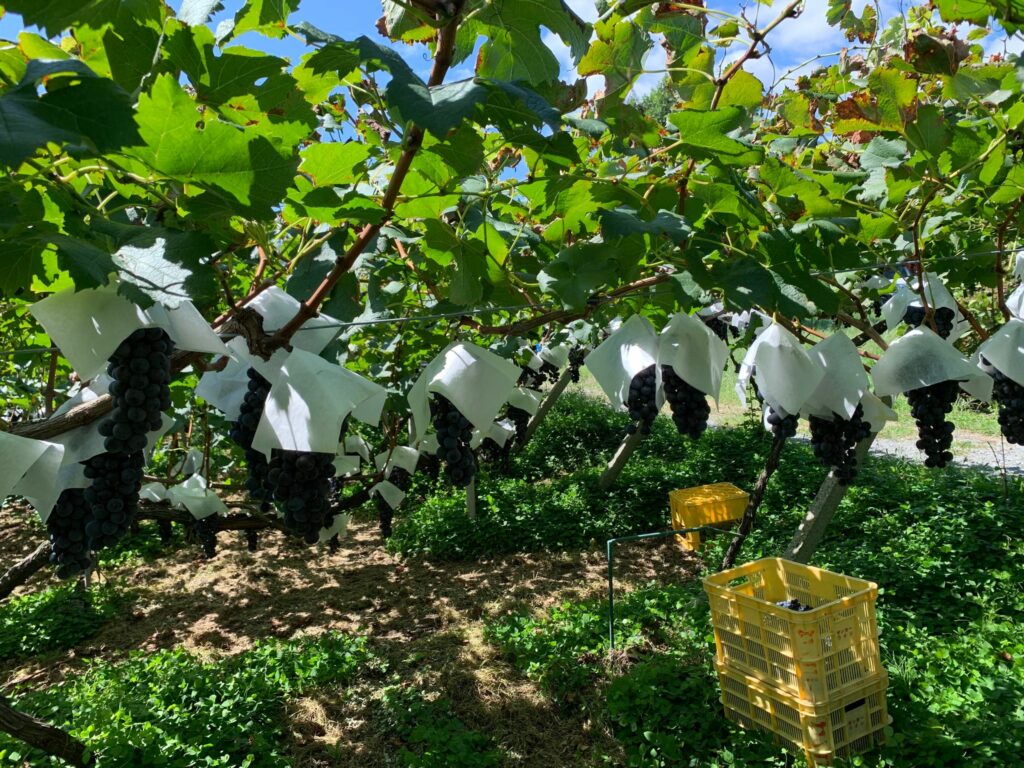
Kasagake (傘掛け) serves several important functions that enhance the growth and quality of grapes:
Overall, using Kasagake (傘掛け) is a traditional and effective method for enhancing grape quality in Japanese viticulture, particularly for varieties like Koshu, known for its delicate flavors and aromatic profile.
The use of Kasagake (傘掛け) is not merely practical; it reflects a deep cultural appreciation for craftsmanship in grape growing. This tradition embodies agricultural practices that have been passed down through generations, showcasing the harmony between nature and human intervention. The meticulous care in crafting and applying kasake highlights the respect for the land and the commitment to producing exceptional wine.
Farmers typically place kasake over the grape clusters during the ripening period, which usually occurs in late spring or early summer. This timing is critical, as it allows the grapes to benefit from the cover throughout their maturation process. The careful placement of Kasagake (傘掛け) demonstrates the skill and knowledge of growers, who understand the unique needs of their vines.
Traditionally, Kasagake (傘掛け) is made from natural materials such as straw, reflecting the resources readily available in the local environment. However, modern adaptations have introduced synthetic fabrics that offer similar benefits while improving durability. These covers can resemble little umbrellas and come in various materials and colors, providing flexibility in vineyard management.
Some Kasagake (傘掛け) are crafted from paper that is coated with wax to ensure waterproofing, while others utilize vinyl to further encourage veraison, the critical phase where grapes begin to ripen and change color. This innovation in materials helps optimize the conditions for grape ripening, ensuring a high-quality yield.
The use of Kasagake (傘掛け) is believed to significantly enhance the overall quality of the wine produced from the grapes. By providing essential protection and creating optimal ripening conditions, winemakers can achieve better flavor concentration, complexity, and balance in the final product. The careful management of grapes during this crucial stage ultimately contributes to the reputation of Japanese wines on the global stage.

Dominik Kozlik e.U.
78/12 Gruberstr.
4020 Linz, Austriaco